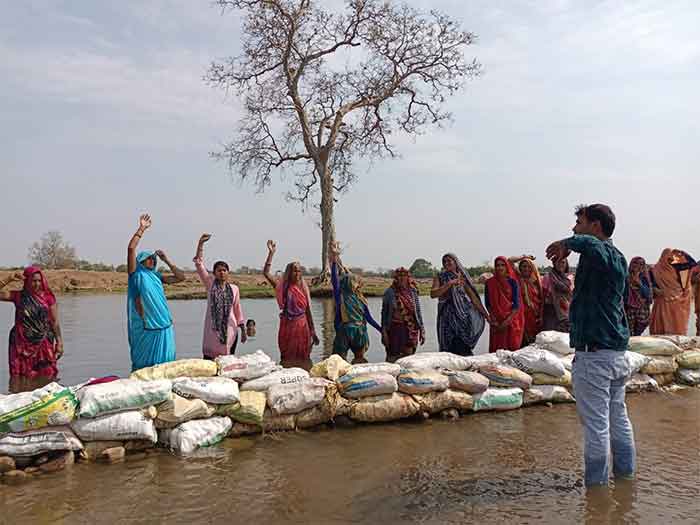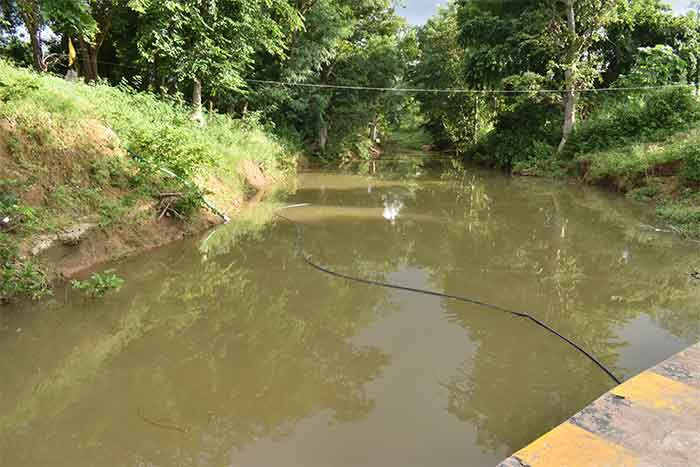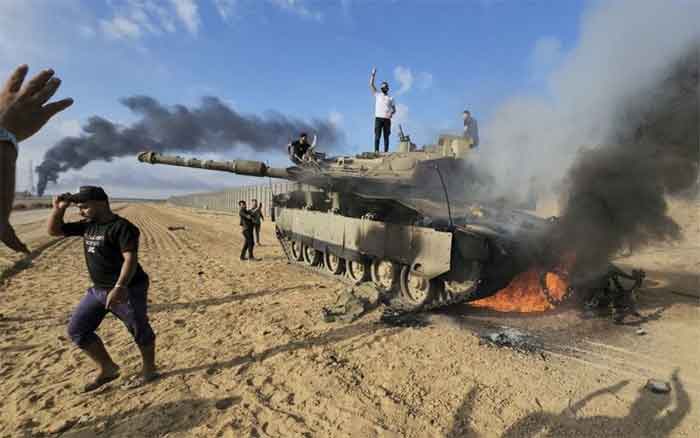
Due to a number of factors like encroachments, pollution, silting and sand-mining, many small rivers and rivulets have been degraded so much and their flow during lean season has been reduced to such an extent that these are almost on the verge of disappearance. In fact some of them have actually ceased to exist as far as visibility during to the greater part of the year is concerned. However careful nurturing can still help to revive these rivers, a task which is very important and can be equally a very creative process, involving the cooperation of many people.
Parmarth, a voluntary organization based in Bundelkhand region, has been striving for this during the last decade or so, resulting in the revival or partial rejuvenation of four small rivers—Kanera, Barua, Bacheri and Bargi. This means that the flow of these rivers has improved considerably due to the efforts of people, helped further by administrative initiatives. However this should be seen as an on-going process as otherwise a repetition of the neglect or harm seen in the past can again create problems. What is particularly important is the learning process of villagers working together for a noble cause and the women in particular making an important contribution.
While community mobilization has been the most important part of this process, this has also seen close cooperation at the level of voluntary organization, the local panchayats and the district administration. Some of the work regarding the construction of check dams or related structures could be taken up on the scale that was needed only because the administration and panchayats were closely involved and schemes like MG-NREGA could be tapped for speedy implementation of the construction work that was needed. Watershed projects such as those supported by NABARD have also contributed to this process.
Parmarth has created a cadre of women volunteers for water conservation and these jal sahelis (water friends) played a particularly important role in this effort. The river restoration involves studying the situation closely and taking out river yatras or collective foot marches in the course of which various important parts of the river are covered fir closer examination. Then meetings are organized and panchayat representatives and district administration officials are also contacted. Generally community organizations or committees for river revival and protection are created.

Recently I visited the Kanera river site in Jhansi district to see this river restoration work. The Kanera river flows for nearly 19 km. across over half a dozen villages in Babina block, before merging into Ghurari river( which itself is a tributary of the Betwa river). Villagers here told me that the Kanera river had a very good flow till about two decades back but then started degrading, adversely affecting irrigation, crop yield and overall water level in nearby villages.
The restoration work for this river include removal of silt and dirt, some deepening work, construction of two check dams and planting of many trees around the river. The Pradhan of Sarwaan village told me that some pitching work needs to be done further to stabilize the gains. Some desilting and cleaning work has also been taken up further ahead in the Ghurari river.
As a result of this restoration work irrigation has improved, water-level has gone up, there are more fish in the river and farm animals as well as stray and wild animals can find water here throughout the year.
Barua river in Talbehat area of Lalitpur district is a 16 km. long tributary of Jamni river. The restoration efforts here involved the creation of a sack-bund. Women made a particularly important contribution in this community effort which could create a temporary bund with sand filled sacks. In addition villagers led by jal sahelis took a firm stand against illegal sand-mining that was harming the river so that the administration had to move fast and curb this mining which had already harmed the river badly.
In the context of Bargi river flowing in Mohangarh area of Tikamgarh district repair of a damaged check dam has given good results while an ongoing watershed project supported by NABARD can help to further stabilize the gains.
In the case of Bacheri river in Chhatarpur district community mobilization played an important role in drawing attention to the problems while the administration contributed much by the actual construction of several check dams.
Afforestation and cleaning work has been taken up in all these efforts. Community organizations that have been created as a part of these efforts raise hopes of continuing care of rivers.
While people particularly farmers are happy due to the increase in irrigation and rise in water level in wells, contributing to better crop yields for many as well as overall better availability of water, these efforts can also be seen as part of climate change adaptation efforts which will increase the resilience of the communities in times of climate change and adverse weather conditions. The increasing cooperation of people and their mobilization fir community tasks also increases hope for future as community capabilities for working together for the welfare of all are enhanced.
Bharat Dogra is Honorary Convener, Campaign to Save Earth Now. His books include Planet in Peril, Man over Machine and India’s Quest for Sustainable Farming and Healthy Food.















































